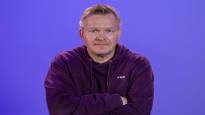In Finland, the golden traditions of endurance sports are sought after, but in the rest of the world they are thrown into the scrap heap, writes journalist Pekka Holopainen.
Pekka Holopainen Sports journalist
In the spring of 2021, the 50-kilometer freestyle ski championship competition at Ristijärvi’s Saukkovaara became a terrible human test, when the warm weather made the weather difficult for the ice-skating skiers.
When the laps were filled, national skiers who were on the borderlines of consciousness rushed to the stadium, and even the A national team men did not have wheat in their mouths.
Doctor from Pori Thomas Zacchaeus is a passionate endurance runner whose value calendar does not even fit skiing in the same week as the marathon.
Now, however, there was such a noble thing on offer that Zacheus was inspired to tweet something like this: “Aijät is absolutely worthless. Great to watch!”
This is how he summed up the basis of the brutality and popularity of endurance sports in a few words. The worlds and states of mind of top sports are finally available to very few people, to which a long-distance skier, a 50-kilometer walker, a marathoner or a cyclist can regularly retreat.
Considered the world’s most talented mailer when he was young Ari Paunonen check out how Finnish endurance running and sports are doing in the latest issue of Huippu-eruhlu news.
26th place in Pohjola
The best Finnish ten-year-old was the 26th best, in Pohjola, last season. Against the best women in the world, the men of Finland have no division when it comes to distances longer than 5000 meters.
The domestic elite competition system has practically abandoned endurance running; even the 5000 meter races don’t want to find a place.
The World Cup win in skiing was one medal – considering the international competition situation, a very weak performance.
At the same time, the contrast screams: since 2002, men’s endurance running has achieved three prestige race victories. From other sport groups, only male throwers have been able to do the same.
The bar is still high
But if endurance sports are tough in Finland, both in terms of quantity and quality, and the culture of the field is a somewhat graying folklore, the bar still shines at a respectable height.
You can’t conclude otherwise after following the kind of news that has been flowing from the world recently about endurance sports.
In Sweden, the local Jukola or Tiomila relay was organized over the weekend. Many species nostalgics traveled to Skellefteå with a drop of lens, because the event was carried out in its bold original form for the last time.
In 2024, there will be a break at night in Nynäshamn – even though the charm of Tiomila has always been based on the very wet, cold, dark, forest that squeezes all the juices out of the athletes in terms of skill and physics.
Let’s play around with the idea that on the long mountainous stage of the Tour of France, the conditions would become “too” heavy because of the weather.
Would it then be good for the drivers to be directed to roadside bistros for a few hours to taste cheeses? So.
Goodbye marathon
In the absolute value scale of marathon running, EC status has not been a hard currency in the past, when the sport is brutally dominated by runners representing East African countries or bought from them to fill the shirts of other representatives.
British record holder Mo Farah is also Somali-born, and the then 92-year-old EC competition tradition of marathon running will also end in Britain, i.e. in Birmingham 2026.
For many who follow athletics, especially at the time of the prestigious games, the strongest mental images are related to a 50-kilometer walk.
Indeed, the sport has offered the amazing aesthetics of top endurance sports, when the holy combination of sunshine, distance and speed has matured the daredevils completely and sometimes dangerously.
First, the royal journey was shortened by 15 kilometers. The 2024 Olympic Games in Paris will then see the final desecration, when the 35-kilometer individual race will be replaced by a mixed relay in the scenery of the Eiffel Tower.
This is how athletes’ Olympic dreams are subordinated to Paris’s tourism advertising, which the city doesn’t even need.
Pekka Holopainen
The author is a columnist based in Pori and the only sports reporter who has been selected as Journalist of the Year in Finland.
What thoughts did the story evoke? You can discuss the topic on 23.5. until 11 p.m.
